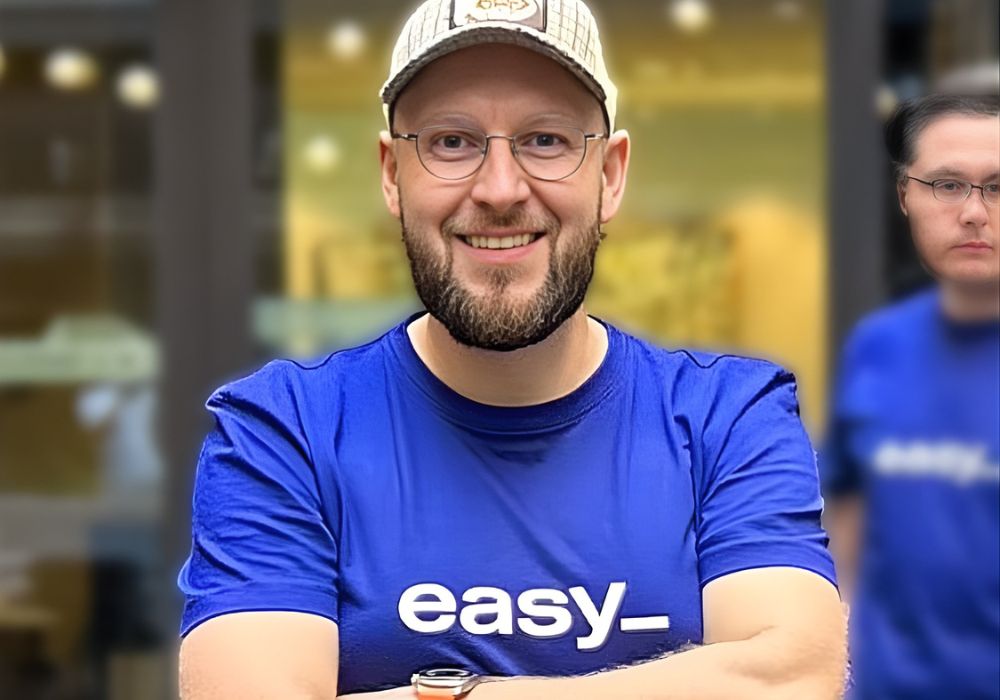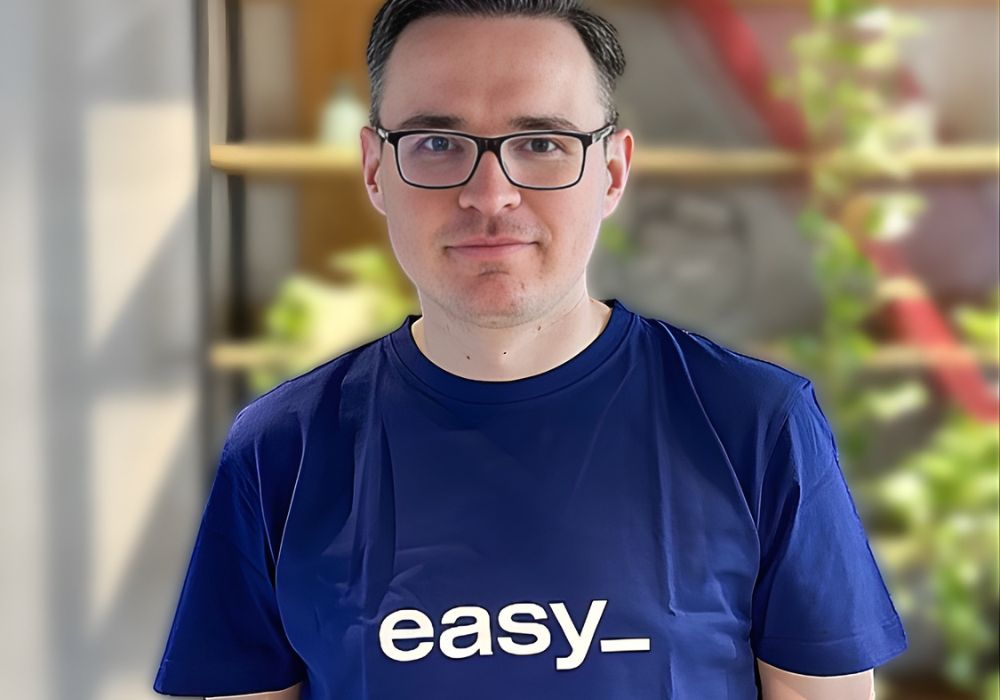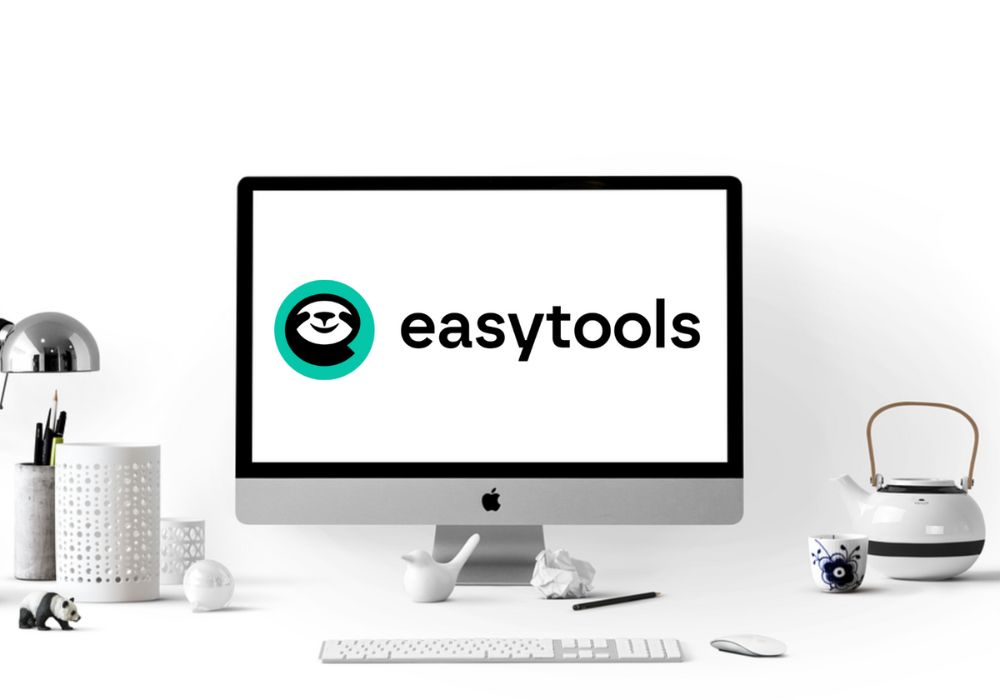This easy.tools case study breaks down how a simple freelance invoicing need sparked one of today’s most popular single-purpose SaaS toolsets. The first invoice I ever created was for a client who didn’t exist. It was 2020, and I was hunched over my laptop in a makeshift home office in Belgium, the glow of the screen my only light. I was building a tool for myself—a simple, clean way to generate PDF invoices for my freelance design work. The ‘client’ was a test entry: “John Doe,” for “Website Design,” $1,500. When I clicked “generate,” and a perfectly formatted, professional PDF snapped into existence, a thought crystallized: “Why is every other tool for freelancers so bloated?” This easy.tools case study breaks down how a simple freelance invoicing need sparked one of today’s most popular single-purpose SaaS toolsets.
That single PDF was the spark. We were entering an era of the solo entrepreneur, the micro-SaaS, the digital nomad. The global freelance services market was ballooning, projected to reach over $1.5 trillion by 2032 . Yet, the tools available were either overly complex project management suites with steep learning curves or bare-bones, unprofessional templates. There was a gaping hole in the middle for elegant, single-purpose utilities that respected a user’s time and intelligence. Our early traction was silent but telling: a simple landing page and a link to a basic web app garnered our first 100 users through word-of-mouth alone, confirming we weren’t the only ones feeling this pain.
Founding Story — Inside the Easy.tools Case Study
The founder is Joren Van Hee, a developer and designer based in Belgium. The company is fully bootstrapped, founded in 2020.
The spark moment was intrinsic. As a freelancer, Joren was his own first customer. The problem was the disjointed, inefficient workflow for essential, non-core tasks.
(Reconstructed quote based on public interviews): “I was frustrated with the time I was wasting on administrative tasks. Invoicing, generating PDFs, calculating percentages—these were necessary but tedious jobs that took me away from actual design work. I wanted tools that were as minimal and well-designed as the interfaces I was trying to build.”
The initial prototype was a suite of these simple utilities built for personal use. Validation came organically. After sharing a few of these tools online, the positive feedback from other developers and freelancers confirmed the broader need. The challenge was one of focus: with a universe of possible “easy tools” to build, which ones delivered the most value? Funding was, and remains, bootstrapped. The company was built on profitability from the start, reinvesting revenue from its premium plans back into development.
Audience & Positioning in the Easy.tools Case Study
Initial Target Audience: Freelance developers and designers, like Joren himself.
Refined Audience: The audience expanded to include a wider range of solopreneurs, small business owners, students, and anyone in a “knowledge worker” role who regularly deals with digital documents, calculations, and data formatting. This refinement was driven by user analytics and feature requests that came from outside the pure tech sphere.
Positioning Map vs. Competitors:
- Vertical Axis: Specificity (Single-Purpose vs. All-in-One Suite)
- Horizontal Axis: Complexity (Simple & Instant vs. Feature-Rich & Complex)
Easy.tools occupies the quadrant of Single-Purpose and Simple & Instant. This contrasts sharply with:
- All-in-One Suites (e.g., QuickBooks, Zoho): High complexity, high feature integration.
- Native Apps (e.g., macOS Calculator, Preview): Low complexity, but not web-based or shareable.
- Other Online Utilities: Often ad-ridden, poorly designed, and unreliable.
Differentiators with Evidence:
- Brutalist Aesthetic & UX: The interface is intentionally stark, fast, and focused. A tool like the “JSON Beautifier” presents a single input box and a button. This is a direct rejection of the cluttered, widget-filled dashboards of competitors. The design philosophy is publicly stated as “content-first, interaction-focused”.
- The “No Sign-Up” Philosophy: Many tools can be used completely anonymously, without creating an account. This drastically reduces friction and respects user privacy, a key concern for professionals handling sensitive data. This is a core feature highlighted on their website.
- Open-Source Core: A significant portion of their tools are open-source, available on GitHub. This builds trust with their technical audience, allows for community contributions, and functions as a transparent, live portfolio of their code quality.
Marketing Platforms & Strategies (Easy.tools Case Study Insights)
Platforms Prioritized:
- Product Hunt: Launches of new tools are strategically posted here to capture the early adopter tech audience.
- GitHub: The open-source repository acts as both a development platform and a marketing channel, attracting developers who then become evangelists.
- Twitter (X): Used for product announcements, engaging with the tech community, and sharing useful tips related to their tools.
- SEO (Organic Search): A primary growth driver. By creating highly specific, useful tools (e.g., “PNG to WEBP converter,” “Markdown to HTML”), they rank for long-tail keywords and capture intent-driven traffic.
Content That Worked Best: The most effective content is the tools themselves. Each tool is a piece of functional content that demonstrates value instantly. Supplemental content includes short, practical tutorials and demos posted on Twitter and their blog.
Campaign 1: “The Invoice Generator” Launch
- Goal: Drive initial user acquisition and establish the brand’s core value proposition.
- Creative: A minimalist landing page featuring a live, interactive demo of the invoice generator. No sign-up required to try it.
- Spend/Performance: As an organic launch, direct ad spend was $0. The campaign was driven by a Product Hunt post. Outcome: Reached #3 Product of the Day, generating over 450 upvotes and a significant spike in traffic and user sign-ups. Exact CTR/CVR/CAC is not publicly verifiable.
Campaign 2: “Developer Tools” SEO Growth
- Goal: Capture sustained, organic traffic from developers searching for specific utilities.
- Creative: Not a campaign in the traditional sense, but a strategic creation and optimization of tools like “JSON Formatter,” “Base64 Encoder/Decoder,” and “SQL Prettifier.”
- Spend/Performance: Investment was in development time. Outcome: These tools consistently rank on the first page of Google for their target keywords, driving thousands of visits monthly. Traffic analytics are not publicly verifiable, but strong SEO rankings are evident from manual search analysis.
Failed Campaign & Lesson:
- The “All-in-One Dashboard” Experiment: Early on, there was an attempt to create a unified dashboard where all tools would live under a single user account.
- Reason for Failure: It added the very friction the brand was founded to eliminate. Users preferred the direct, URL-based access to individual tools.
- Lesson: “We learned to never compromise on our core principle of speed and simplicity. The product’s architecture must reflect its marketing promise.”
Technology & Analytics Stack Behind Easy.tools
- Frontend: Svelte/SvelteKit. Chosen for its performance and minimal runtime overhead, which aligns with the product’s fast, lightweight ethos.
- Hosting: Vercel. Provides a serverless architecture that scales seamlessly with the static and dynamic parts of the web app.
- Analytics: A privacy-focused, minimal analytics setup is likely used (e.g., a self-hosted Plausible or Simple Analytics), though the specific tool is not publicly verifiable. The key KPIs would be tool usage counts, bounce rate, and conversion rate to Pro accounts.
- KPIs Tracked: (Based on business model) Number of active tools, monthly unique visitors, free-to-paid conversion rate, and customer churn. The funnel is simple: Land on Tool -> Use Tool -> (Optional) Sign Up for Pro Features.
Growth Milestones — Easy.tools Case Study Timeline
Timeline: The Easy.tools Journey
2020
Foundation: First tools (Invoice Generator, PDF Merger) built for personal use.
2021
Public Launch: Tools shared publicly on Twitter/Product Hunt.
Organic Growth: SEO begins driving consistent traffic to developer tools.
2021
Pro Plan Introduced: Freemium model launched with advanced features.
Product Expansion: Suite grows to over 20 tools.
2022
Audience Refinement: Tools for non-developers (e.g., image converters, color pickers) added.
Brand Consolidation: Website and branding unified under Easy.tools.
2023-Present
Sustained Growth: Continued tool development and user base expansion.
Open-Source Advocacy: Increased activity and visibility on GitHub.
Challenges & Failures in the Easy.tools Journey
Setback 1: The “Too Niche” Fear
“Early on, we worried that single-purpose tools were too niche to build a business on. The pressure to add more features, to become a ‘platform,’ was constant.”
- Postmortem: This is a common startup trap. Analysis shows that a portfolio of targeted, best-in-class tools can collectively serve a massive market, while a bloated platform often serves no one well. Sticking to the “do one thing well” philosophy became their strongest branding element.
Challenge 2: Monetizing a Free-Product Mindset
“Our users were accustomed to free, ad-supported tools. Convincing them of the value of a clean, reliable, pro version was our first major hurdle.”
- Postmortem: The key was tiering features correctly. The free version remained genuinely useful, while the Pro plan offered clear, high-value upgrades like batch processing, custom branding, and API access. This followed the classic “give away the core, charge for the convenience” model used successfully by companies like Dropbox and GitHub.
Setback 3: Balancing Open-Source and Business
“We believe in open-source, but we also need to be a sustainable business. Finding the right line—what to open-source and what to keep proprietary—was a delicate dance.”
- Postmortem: They adopted a model where the core functionality of many tools is open-source, building trust and community, while the Pro features (like cloud storage, APIs, and advanced options) are closed-source. This strategy is used effectively by companies like Sentry and Ghost.
Becoming a Household Name in the SaaS Space
Easy.tools achieved “household name” status within specific tech and creator circles through a relentless focus on product-quality and word-of-mouth, not traditional PR.
- Virality through Utility: Their tools are naturally shareable. A developer might directly share a link to a “minified JSON prettifier” with a colleague, implicitly endorsing the brand.
- Cultural Breakthrough in Micro-SaaS: They are frequently cited in online communities (like Indie Hackers and Hacker News) as a prime example of a successful, bootstrapped, single-founder business. This organic recognition within their target demographic is more valuable than broad, shallow press coverage.
- SEO as a Trust Engine: By consistently ranking high for practical search terms, they become the de facto, trusted solution for millions of intent-driven queries. This is a form of passive, scalable brand building.
Financial & Operational Insights (Easy.tools Case Study Breakdown)
- Funding: Bootstrapped. No venture capital raised. The company is funded through its own revenues.
- Revenue Milestones: Specific revenue figures are not publicly verifiable. The business model is a freemium SaaS, with a Pro subscription priced at a monthly or annual fee.
- Unit Economics: As a digital product with near-zero marginal cost per user, the key metrics are Customer Acquisition Cost (CAC) and Lifetime Value (LTV). Given the reliance on organic acquisition (SEO, word-of-mouth), CAC is likely very low. LTV is driven by low churn, which is fostered by a product that becomes embedded in a user’s daily workflow.
- Product Iteration: The operational shift has been one of gradual, user-informed expansion. Starting with a core set of document tools, they have systematically added utilities in adjacent categories (developer tools, design tools, data converters) based on user demand and traffic potential.
Lessons for Founders — What This Easy.tools Case Study Teaches
- Build What You Need: Your own pain points are a valid and powerful starting point for a business.
- Bootstrap Until It Hurts (Then Bootstrap Some More): Forcing profitability from day one instills discipline and ensures you build something people are willing to pay for.
- Optimize for Frictionless First Use: The “No Sign-Up” philosophy can be a powerful acquisition tool. Remove every possible barrier to a user experiencing your core value.
- Embrace Single-Purpose Excellence: Don’t be afraid of being “niche.” A portfolio of excellent, focused products can be a stronger business than one mediocre, broad one.
- Your Stack is a Marketing Statement: Using modern, performant technologies (like Svelte) is a feature that resonates with a technical audience.
- Open-Source Strategically: Use open-source to build trust, community, and a talent pipeline, while protecting the features that directly drive revenue.
- Functional Content is King: For certain businesses, the product is the content. Investing in creating best-in-class functional assets (like free tools) can be your most effective SEO and marketing strategy.
- Distribution is Foundational: Before building, ask “how will people find this?” For Easy.tools, the answer was SEO and community platforms. Have a distribution plan.
- Price on Value, Not Cost: Price your product based on the time it saves or the value it creates for the user, not the cost of the servers it runs on.
- Iterate in Public: Share your progress, your failures, and your wins on platforms like Twitter. It builds a community and holds you accountable.
One-Page Executive Summary
Easy.tools is a bootstrapped, profitable SaaS company founded in 2020 by Belgian developer Joren Van Hee. It offers a suite of over 30 single-purpose, web-based utilities—such as invoice generators, PDF editors, JSON formatters, and image converters—designed to eliminate bloated software and streamline workflows for freelancers, developers, and solopreneurs.
The company discovered a core market insight: professionals waste significant time on simple digital tasks because existing tools are either overly complex or low-quality. Easy.tools competes through brutalist design, instant access without mandatory sign-ups, and a strategic open-source approach. Its growth is driven primarily by organic search (SEO), with each tool acting as functional content that captures specific, intent-driven traffic. Launches on community platforms like Product Hunt and GitHub provide additional, high-quality user acquisition.
Key to its success is a fanatical focus on user experience and a sustainable, bootstrapped mindset. The philosophy is to build what you need, charge for clear value, and let a great product market itself through utility and word-of-mouth. For founders, Easy.tools serves as a masterclass in building a focused, bootstrapped business that achieves deep resonance within a target audience by solving simple problems exceptionally well.






